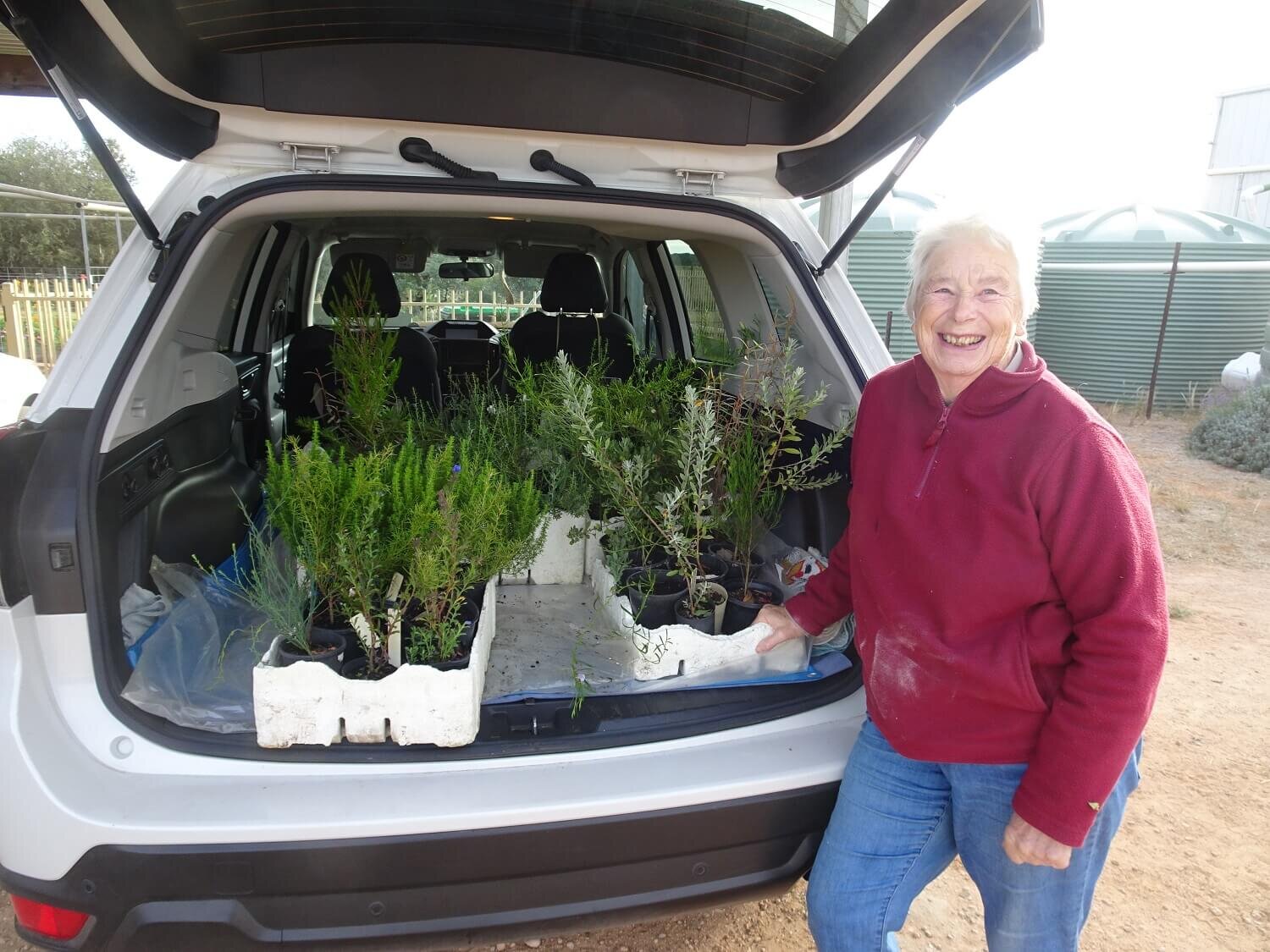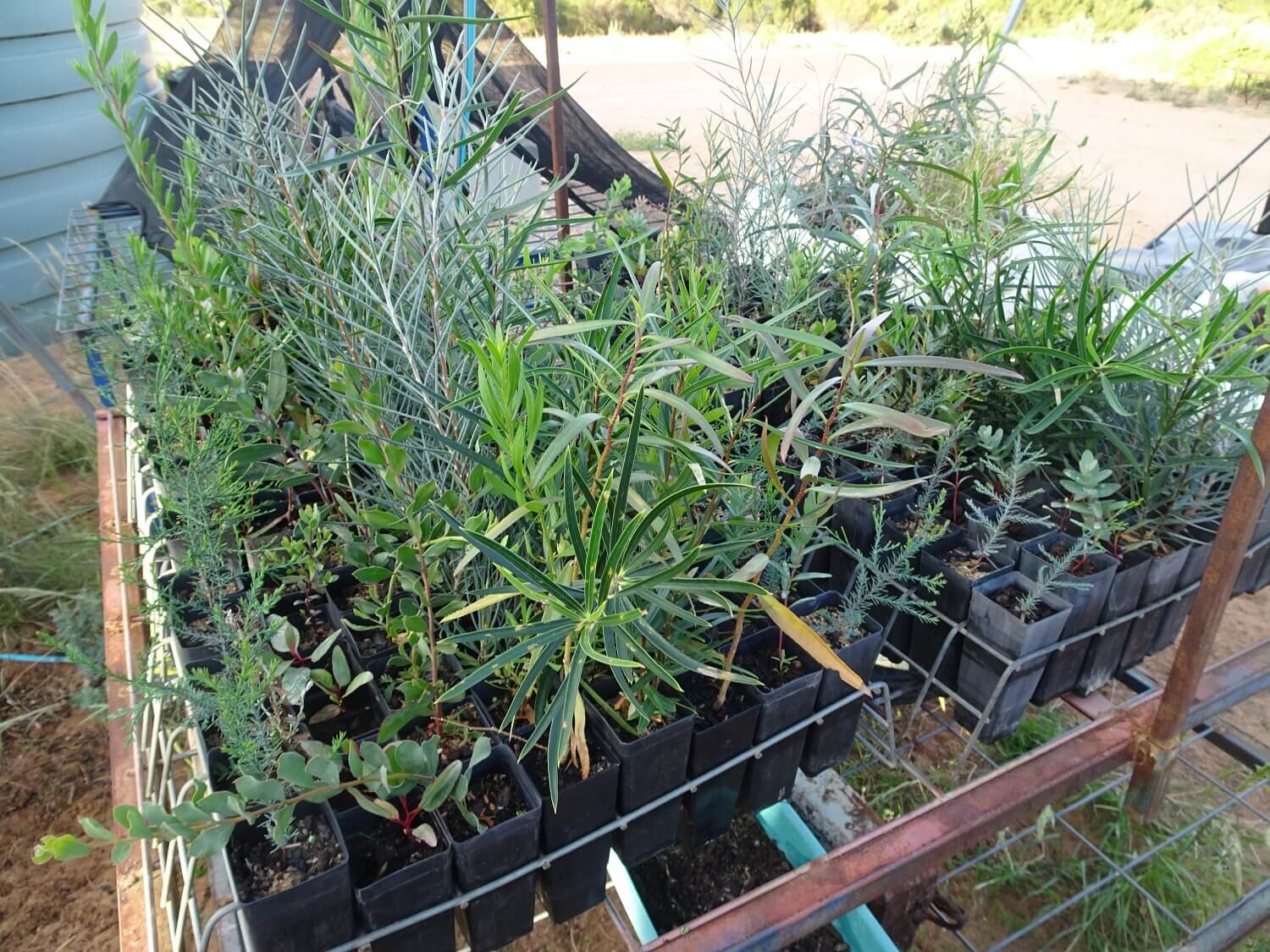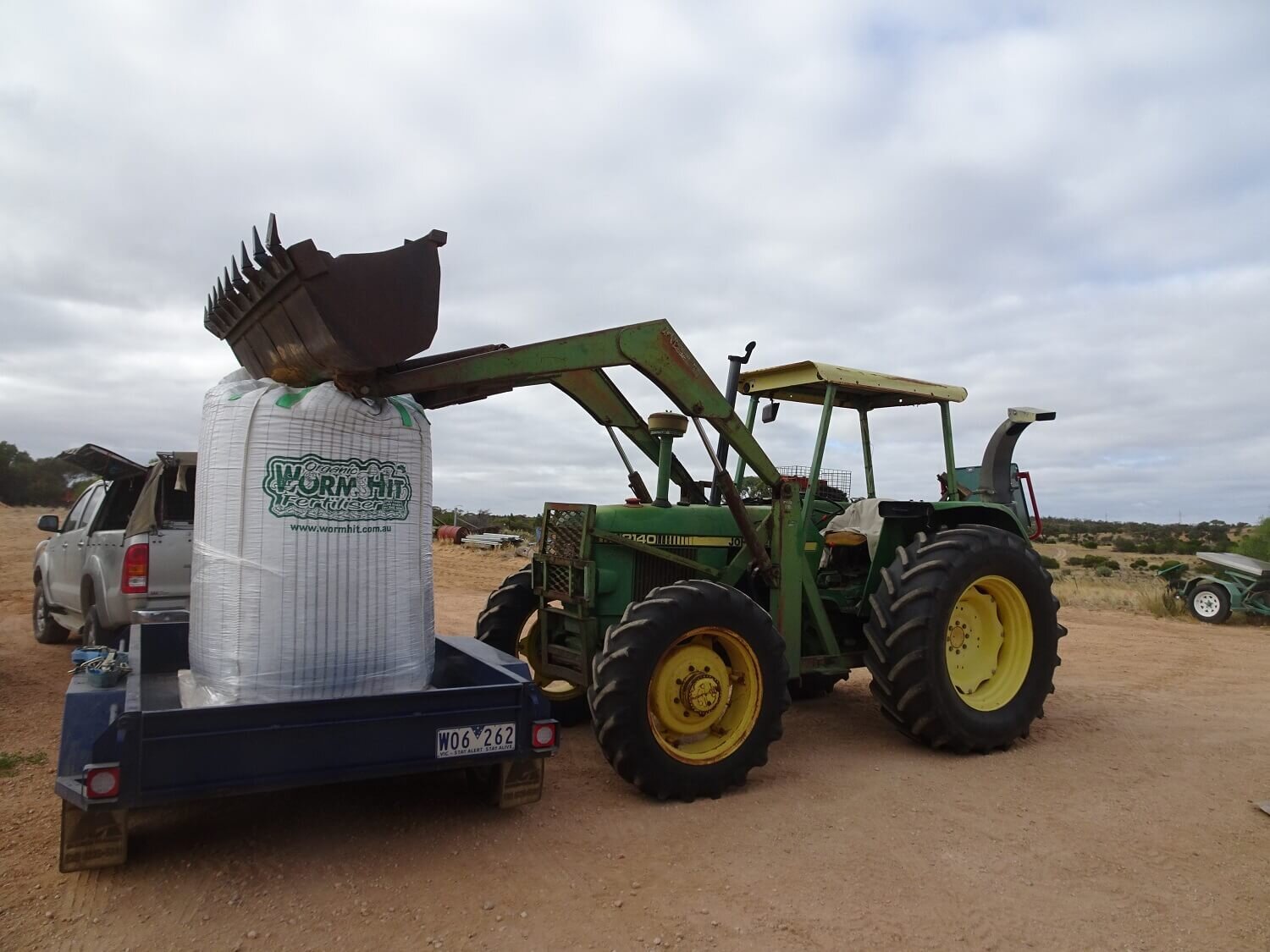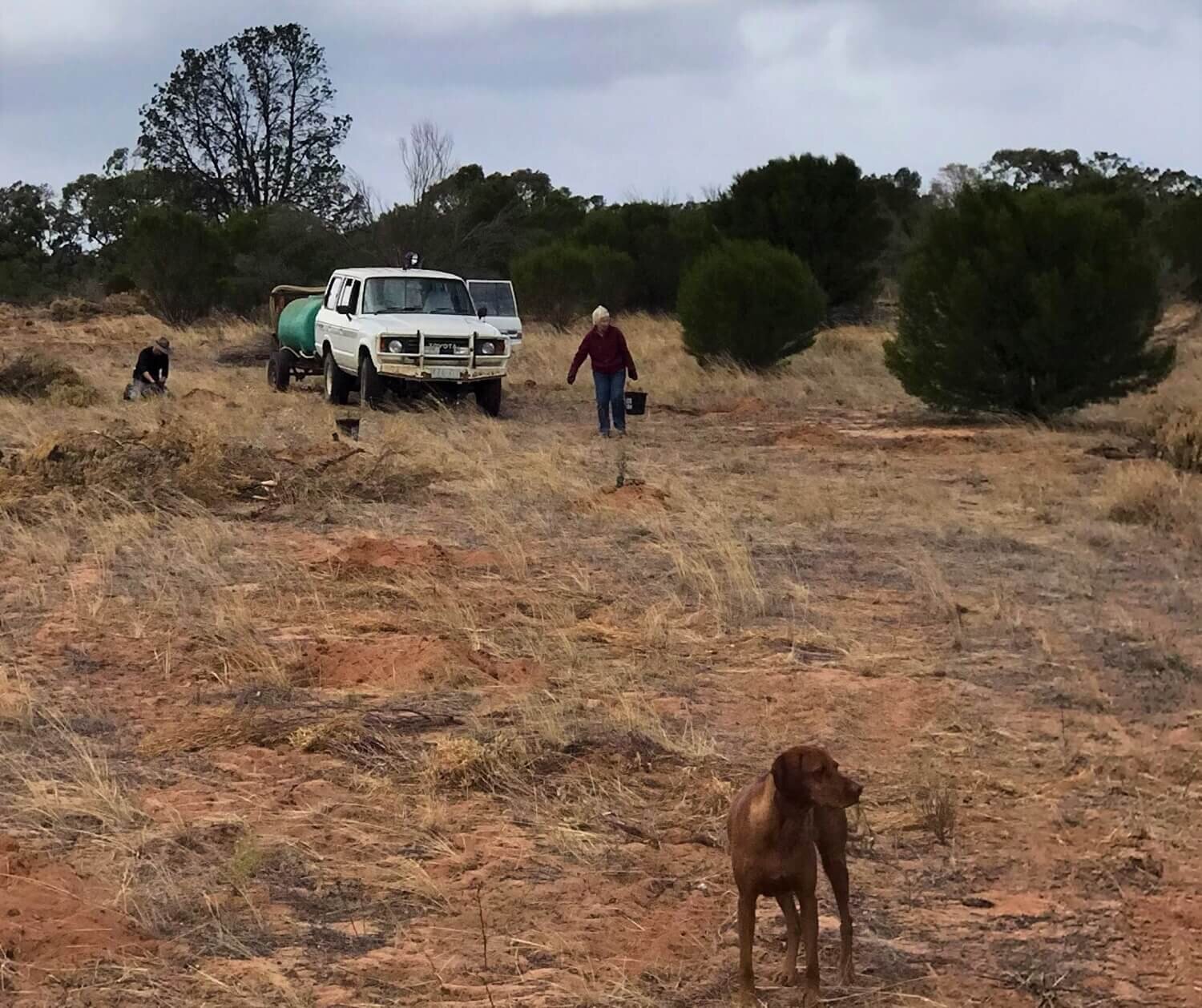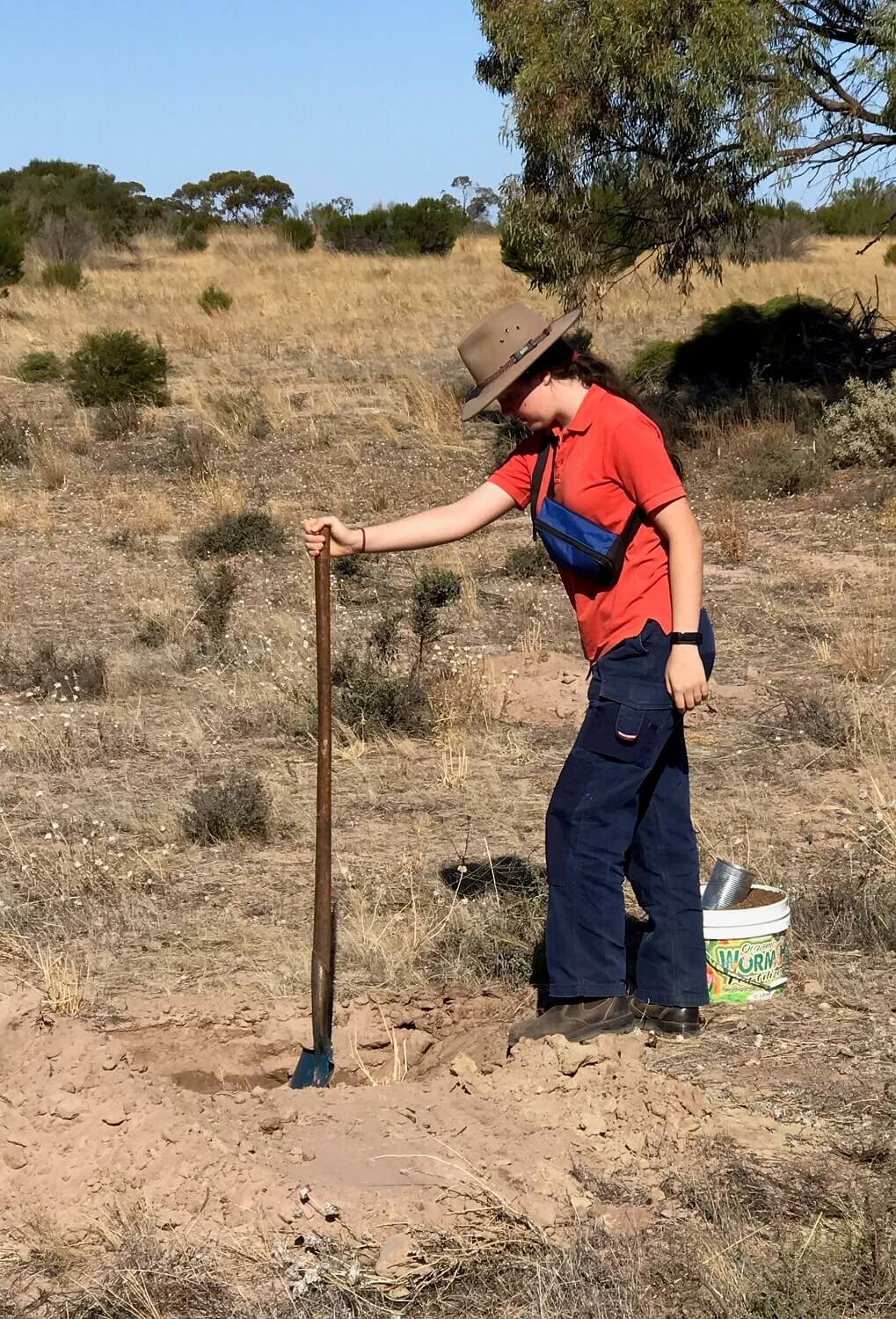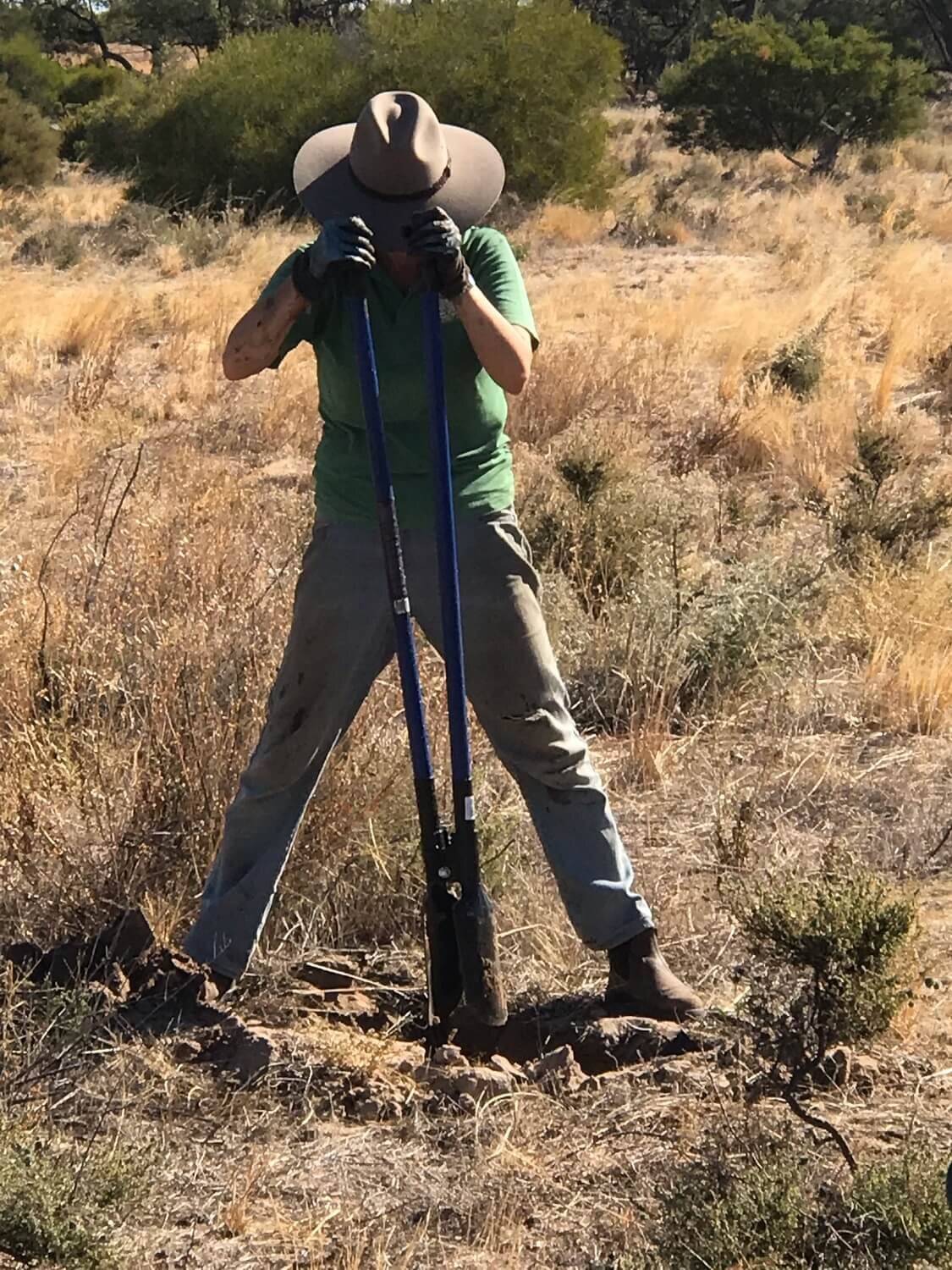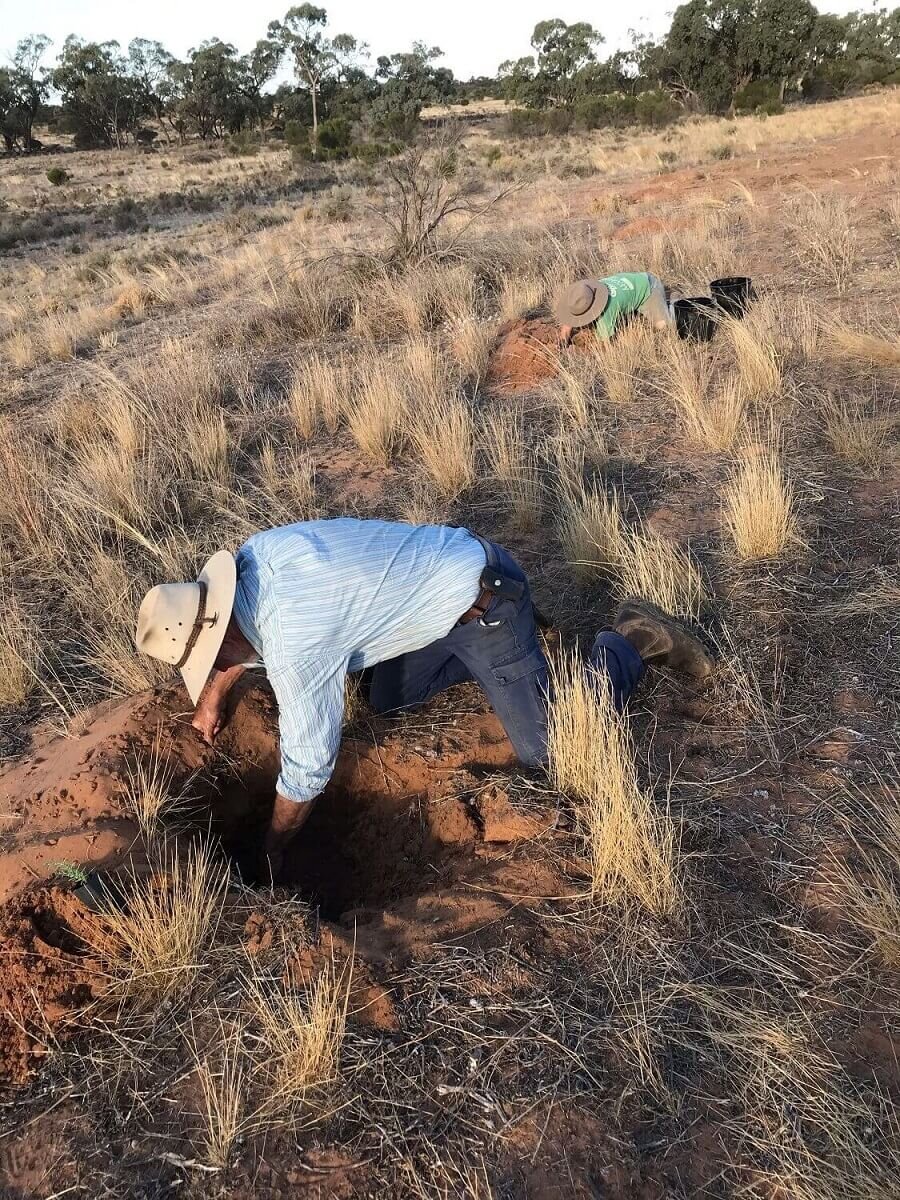Tree planting 2021
Hooray!! Tree planting is finished for the 2021 season. I completely wore out my 80-year-old parents, husband Phil damaged his elbow digging, and daughter Em staged a mutiny as only a fifteen-year-old can. But all the trees are in the ground. Advance warning though … we’ll be looking for volunteers to help next year. Do you think you’d be free for the first weekend of April 2022?!
This year we decided to plant dry so we prepared the holes and pre-watered them a week or so before planting out last weekend. In previous years we have waited for the first rains of Autumn: the “Autumn break”. However, the break seems to be coming later and later and planting in May or June means the tree don’t have enough time to develop strong roots before the Winter frosts, and are then too small as they head into their first Summer.
This year we also tried Worm Hit instead of slow-release chemical fertiliser. It’s an organic, pelletised fertiliser made locally from worm casts. We’ve used it before but have been a bit stingy, so this year we used 500g per plant. We bought it by the tonne so it worked out to about $0.55 per plant. Along with regular watering, we're hoping the pellets will boost soil microbiology in our deep sand. This will help our revegetation establish, and grow more strongly. We'll let you know how it goes! Getting the 1-tonne bag into the shed was a challenge!
You might notice we do things a bit differently from what you might consider normal tree-planting. Every year we try to improve our method to increase the survival of tube stock in our dry climate (rainfall of 250-300 mm per year). This is what our current “best practice” looks like:
Using an excavator, dig a deep basin for the tree. This is a bit like ripping the planting lines to let the moisture in, but with less soil disturbance.
A week before planting, add about 15L of water per hole if there hasn’t been any rain.
On planting day:
Dig out the basin with a shovel. Ensure that the soil is placed on the downhill side so it forms a tiny catchment dam.
Add 500g Worm Hit, 1/2 tbsp of water crystals and another 10L of water.
Plant the tree into the wet slurry, making sure the tree is deep in the hole and planted on the northern edge. We don’t use tree-guards instead, the walls of the hole provide shade for the seedling and we manage grazing pressure as best we can (mainly kangaroos).
Water in the seedling and then keep watering as required throughout the first year. The deep basin makes it easier to water deeply because it holds 10L of water. It gradually fills in with time but by then the plant is well-established and growing strongly (hopefully).
We collect and grow our own seeds for the tube stock. We can manage about 300 plants in our tiny nursery, which is also about the number we can manage to keep watered through their first year. This year mum and dad took some tricky seed home to grow for us so we had an extra 50 or so, plus lots of plants for the garden!
By the way, you might think our planting holes are outrageous, but I love this video from Kenya of their planting holes in the desert https://www.facebook.com/GoWasteEd/videos/3481507775305497/

